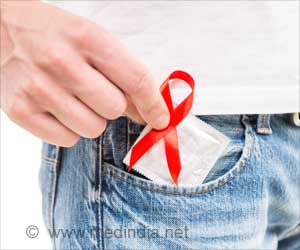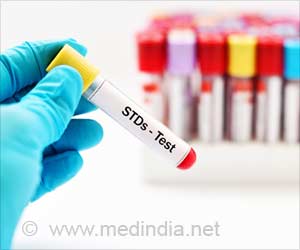- STD Awareness Month is observed in April every year
- Its objective is to create awareness about the diagnosis, treatment and prevention of STDs
- It aims to significantly reduce the global burden of STDs by 2030
Read More..
2019 STD Awareness Month Theme: ‘Start the Conversation about STDs’
This year’s theme ‘Start the Conversation about STDs’ is very apt, as it encourages conversation and dialogue between healthcare providers and infected patients, as well as their partners to highlight the issues associated with STDs. This STD awareness month is aimed at creating awareness among susceptible groups, such as people living with HIV/AIDS, adolescents, young adults and high-risk groups such as sex workers, homosexuals, injecting drug users (IDU), migrants, and the LGBTQ community.STD (Sexually Transmitted Diseases) : Facts & Figures
- Over 1 million infections arising from sexual contact occur every day worldwide
- 357 million new infections are reported annually from any one of the following four STDs: syphilis, gonorrhea, chlamydia or trichomoniasis
- Highly susceptible age-group is 15-49 years
- 500 million people are infected with herpes simplex virus (HSV)
- HSV Type 2 infections and syphilis can increase susceptibility to human immunodeficiency virus (HIV) infections
- 290 million women are infected with human papillomavirus (HPV), which causes cervical cancer
- 988,000 pregnant women had syphilis in 2016, which resulted in 200,000 stillbirths and newborn deaths
- Antibiotic resistance to gonorrhea and other STDs is a major problem worldwide
- The global burden of the four most common curable STDs are indicated below:
- Trichomonas: 142 million
- Chlamydia: 131 million
- Gonorrhea: 78 million
- Syphilis: 6 million
STDs (Sexually Transmitted Diseases) in India
STDs are an important public health issue in India. A study by the Indian Council of Medical Research (ICMR) showed that 6 percent of adults in India are infected by one or more sexually transmitted pathogens every year. This amounts to 30-35 million infections annually.Four common STDs prevalent in India, namely HIV/AIDS, chlamydia, gonorrhea, and syphilis are briefly discussed below:
- HIV/AIDS: Acquired Immune Deficiency Syndrome (AIDS) is caused by HIV. This disease is characterized by progressive weakening of the immune system, causing immunodeficiency. Its prevalence in Indian men is 0.32 percent and in women is 0.22 percent
The National AIDS Control Organization (NACO) provides the following epidemiological data for 2011: - People Living with HIV/AIDS (PLHA): 20,88,638
- Children Living with HIV/AIDS (CLHA): 1,45,446
- New Infections: 1,16,459
- Deaths: 1,47,729
- The National Family Health Survey-4 (NFHS-4) for 2015-2016, provides statistics on the level of knowledge about HIV/AIDS among Indian adults:
- Men who have comprehensive knowledge of HIV/AIDS: 32.5 percent
- Women who have comprehensive knowledge of HIV/AIDS: 20.9 percent
- Men who know that condoms reduce transmission of HIV/AIDS: 77.4 percent
- Women who know that condoms reduce transmission of HIV/AIDS: 54.9 percent
- Chlamydia: This is caused by the bacterium Chlamydia trachomatis. It causes infertility and ectopic pregnancies in women. Chlamydia affects more than a million Indians annually and is one of the most prevalent STDs in India. Its prevalence in Indian men is 2 percent and in women is 0.5 - 28.7 percent
- Gonorrhea: This is caused by the bacterium Neisseria gonorrhoeae and is characterized by thick green or yellow discharge from the penis or vagina. Its prevalence in men is 3.4 percent and in women is between 0 - 4.2 percent
- Syphilis: This is caused by the bacterium Treponema pallidum and is characterized by the appearance of painless sores on the genitals and mouth. If untreated, the infection can spread to other vital organs. Its prevalence in Indian men is 0.3 percent and in women is between 0.2 - 8.8 percent
Challenges in Reducing the Global Burden of STDs
The global burden of STDs not only reduces the quality of life and sexual and reproductive health, but also jeopardizes the health and wellbeing of children and newborns. Therefore, STDs have a profound impact on the lives of children, adolescents and adults worldwide. The major challenges are briefly highlighted below:- Fetal & Neonatal Mortality: The number of fetal and neonatal deaths arising from STDs is enormous. For example, syphilis during pregnancy leads to over 300,000 fetal and neonatal deaths annually. It also increases the risk of early death in 215,000 infants. This arises due to vertical transmission of the bacterium from mother-to-child
- Infertility: STDs such as chlamydia and gonorrhea can cause irreversible damage to the female reproductive system. If left untreated, these can lead to pelvic inflammatory disease (PID), which can result in infertility. Huge numbers of women suffer from infertility due to STDs worldwide
- Elevated HIV Risk: Preexisting STDs such as syphilis, gonorrhea and HSV infections, can increase the risk of acquiring and transmitting HIV by up to 3-times
- Cervical Cancer: HPV infections pose a huge threat to the lives of women. Currently, there are over 530,000 cervical cancer cases worldwide and the annual death toll from cervical cancer is 264,000
- Other Challenges: Besides the above challenges, the physical, psychological, emotional, financial and social consequences of STDs have a huge impact on the lives of infected patients
WHO’s Efforts to Reduce the Global Burden of STDs
Global efforts to reduce the burden of STDs are being spearheaded by the World Health Organization (WHO). The WHOs “Global Health Sector Strategy on Sexually Transmitted Infections 2016-2021” is aimed at ending the STD epidemic as a public health problem. The strategy is fully aligned with the 2030 Sustainable Development Goals (SDGs), in particular, SDG Goal 3: “Ensure healthy lives and promote wellbeing for all at all ages”.The WHO strategy focuses on the following aspects:
- Transmission Reduction: STD transmission, especially mother-to-child transmission of syphilis and HIV, as well as acquisition of new infections must be reduced through evidence-based behavioral, biomedical and other interventions
- Diagnosis & Treatment: Strategies should be developed for early diagnosis and prompt treatment of STDs, as well as management of symptomatic patients
- Vaccination: STDs for which vaccines are already available should be recommended. For example, the HPV and hepatitis B virus (HBV) vaccines should be judiciously used to vaccinate high-risk populations for preventing STDs
- Screening: STD screening is very important for the early detection of infections. This is especially important for dangerous STDs such as HIV/AIDS and HPV
- Counseling: Behavioral counseling is crucial for bringing about changes in sexual attitudes and behavior such as adopting barrier methods like condoms, for preventing the spread of STDs
- Equity & Access: Access to high quality healthcare, including comprehensive long-term care for STDs should be available to all, irrespective of gender, ethnicity, education level, or social standing
- Reduction of Antibiotic Resistance: There is an urgent need for reduction of antibiotic resistance, which is spreading at an alarming rate. This is especially required for controlling the spread and impact of gonococcal antibiotic resistance
- Education: Dissemination of accurate information among people suffering from STDs or those belonging to high-risk groups will help to increase knowledge and weed out misconceptions about this disease
- Stigma Reduction: Stigmatization and discrimination against people with STDs must be reduced for upholding human rights and equality for all
- Empowerment: This involves meaningful engagement and empowerment of people most affected by STDs so that they can have a voice in matters of policy
- Collaboration: Partnerships and linkages between various stakeholders should be established to encourage intersectoral collaboration for achieving goals and targets pertaining to STD elimination
Conclusion
From the foregoing discussion, it is evident that STDs are an important public health problem worldwide. The month of April reminds us to think about the problem, as well as take action. So, let us renew our pledge and pool our resources together to collectively fight this global scourge to diminish its ferocity.Reference:
- Sexually Transmitted Infections (STIs) - World Health Organization - (https://www.who.int/news-room/fact-sheets/detail/sexually-transmitted-infections-(stis)
- Global Health Sector Strategy on Sexually Transmitted Infections 2016-2021: Towards Ending STIs - World Health Organization - (https://apps.who.int/iris/bitstream/handle/10665/246296/WHO-RHR-16.09-eng.pdf;jsessionid=D47BB94B722615A706594586077E0425?sequence=1)
- Hawkes S, Santhya KG. Diverse Realities: Sexually Transmitted Infections and HIV in India. Sex Transm Infect. 2002;78(Suppl 1): i31-i39 - (https://sti.bmj.com/content/sextrans/78/suppl_1/i31.full.pdf)
- State Fact Sheets, March 2014 - National AIDS Control Organization, Ministry of Health and Family Welfare (MoHFW), Government of India - (http://naco.gov.in/sites/default/files/State_Fact_Sheet_2013_14.pdf)
- India Fact Sheet - National Family Health Survey-4 (NFHS-4), 2015-2016, Ministry of Health and Family Welfare (MoHFW), Government of India - (http://rchiips.org/nfhs/pdf/NFHS4/India.pdf)
- Suvirya S, Singh R, Senthamizh P, Sharma V. Treatment Seeking Behaviour of STI Clients in a Tertiary Care Centre of North India: A Cross Sectional Study. Indian J Sex Transm Dis AIDS. 2016; 37(1): 7-11. - (https://www.ncbi.nlm.nih.gov/pmc/articles/PMC4857687/#ref3)
Source-Medindia










